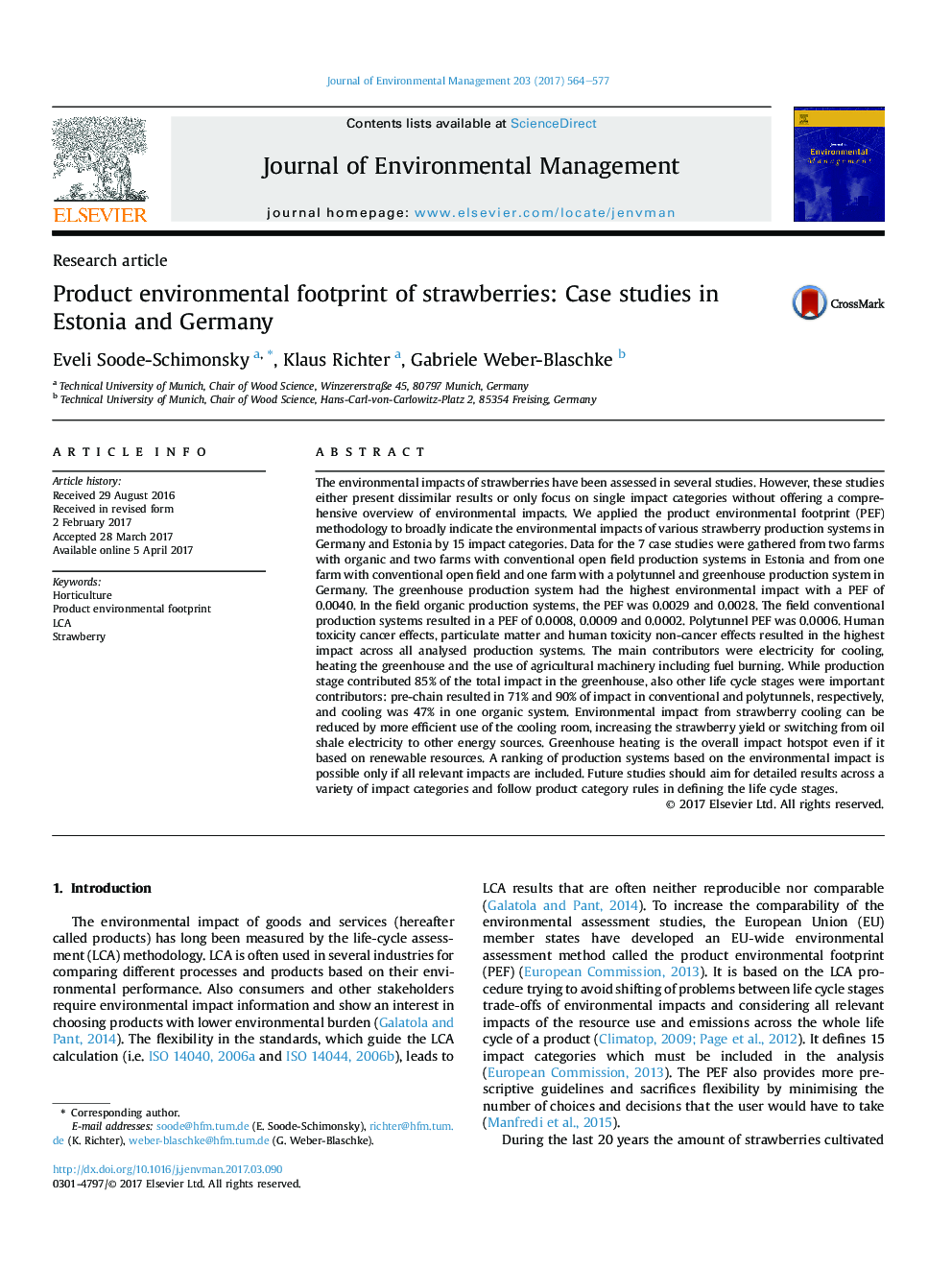| کد مقاله | کد نشریه | سال انتشار | مقاله انگلیسی | نسخه تمام متن |
|---|---|---|---|---|
| 5116543 | 1378099 | 2017 | 14 صفحه PDF | دانلود رایگان |
عنوان انگلیسی مقاله ISI
Product environmental footprint of strawberries: Case studies in Estonia and Germany
ترجمه فارسی عنوان
اثرات زیست محیطی محصولات توت فرنگی: مطالعات موردی در استونی و آلمان
دانلود مقاله + سفارش ترجمه
دانلود مقاله ISI انگلیسی
رایگان برای ایرانیان
موضوعات مرتبط
مهندسی و علوم پایه
مهندسی انرژی
انرژی های تجدید پذیر، توسعه پایدار و محیط زیست
چکیده انگلیسی
The environmental impacts of strawberries have been assessed in several studies. However, these studies either present dissimilar results or only focus on single impact categories without offering a comprehensive overview of environmental impacts. We applied the product environmental footprint (PEF) methodology to broadly indicate the environmental impacts of various strawberry production systems in Germany and Estonia by 15 impact categories. Data for the 7 case studies were gathered from two farms with organic and two farms with conventional open field production systems in Estonia and from one farm with conventional open field and one farm with a polytunnel and greenhouse production system in Germany. The greenhouse production system had the highest environmental impact with a PEF of 0.0040. In the field organic production systems, the PEF was 0.0029 and 0.0028. The field conventional production systems resulted in a PEF of 0.0008, 0.0009 and 0.0002. Polytunnel PEF was 0.0006. Human toxicity cancer effects, particulate matter and human toxicity non-cancer effects resulted in the highest impact across all analysed production systems. The main contributors were electricity for cooling, heating the greenhouse and the use of agricultural machinery including fuel burning. While production stage contributed 85% of the total impact in the greenhouse, also other life cycle stages were important contributors: pre-chain resulted in 71% and 90% of impact in conventional and polytunnels, respectively, and cooling was 47% in one organic system. Environmental impact from strawberry cooling can be reduced by more efficient use of the cooling room, increasing the strawberry yield or switching from oil shale electricity to other energy sources. Greenhouse heating is the overall impact hotspot even if it based on renewable resources. A ranking of production systems based on the environmental impact is possible only if all relevant impacts are included. Future studies should aim for detailed results across a variety of impact categories and follow product category rules in defining the life cycle stages.
ناشر
Database: Elsevier - ScienceDirect (ساینس دایرکت)
Journal: Journal of Environmental Management - Volume 203, Part 1, 1 December 2017, Pages 564-577
Journal: Journal of Environmental Management - Volume 203, Part 1, 1 December 2017, Pages 564-577
نویسندگان
Eveli Soode-Schimonsky, Klaus Richter, Gabriele Weber-Blaschke,
